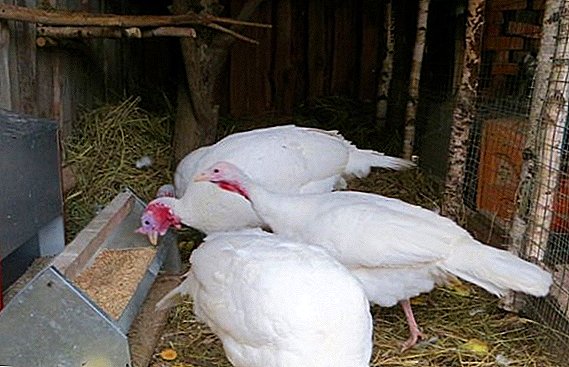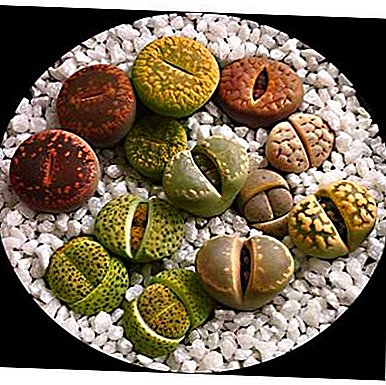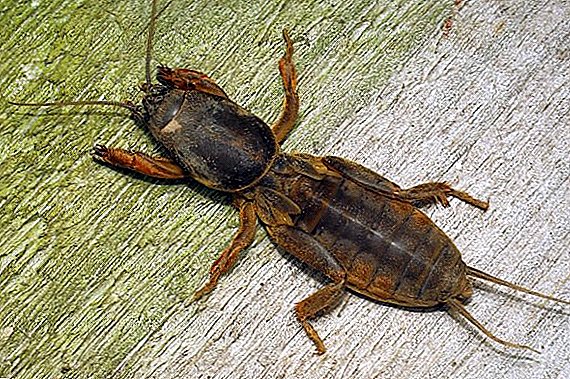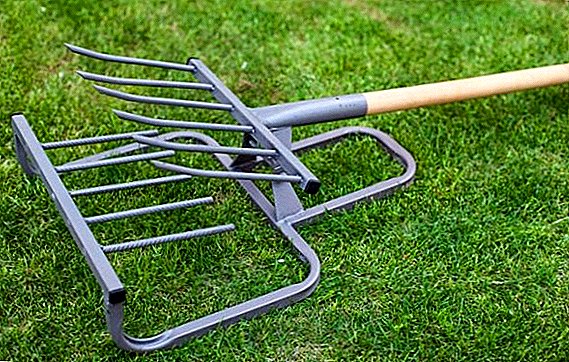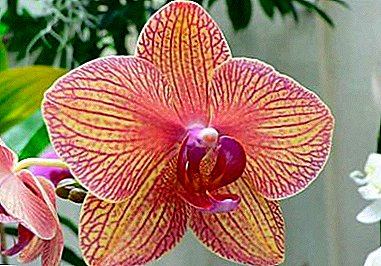
Orchid can bloom several times a year, releasing long flower stalks, covered with exotic buds. During this period, the plant is particularly vulnerable, so it requires special care.
In our article we will look at how to properly care for a flower during its flowering, how to pollinate it, replant it, water it, fertilize it and much more. You can also watch a useful video on the topic.
What happens to a plant when it blooms?
Orchids are able to bloom at any time of the year.. For this, it is only necessary to comply with certain conditions. The duration of flowering can reach three months, although there are cases when orchids have pleased flowers for five or even eight months. The flowering process begins with the growth of a long flower spike that develops within two months. Then buds appear on it, which later bloom.
Differences in care during and after blooming
In each developmental period, the orchid needs a certain care.
 When she is just beginning to gain strength for the development of the peduncle, special supplements are important to help the flower grow faster.
When she is just beginning to gain strength for the development of the peduncle, special supplements are important to help the flower grow faster.- The process of watering during the flowering period and during the rest period is different: as soon as it becomes cool in the room, the amount of water is reduced.
- After flowering, the plant needs pruning. Replant room culture is possible only after the end of this period.
What does competent care depend on?
Competent orchid care during flowering depends on meeting certain conditions.required flower. It consists in the following:
- The florist should provide enough light.
- Regularly and abundantly watered.
- Monitor the humidity in the room.
- Add foliar feedings.
Transplantation and cropping are not carried out during this period.
Pollination process
A cap of the anther is separated from the stigma with a toothpick or tweezers, from which pollinia are then isolatedrepresenting two balls of yellow color and small size. At the bottom of the column of another flower, a small depression is found where pollinia is introduced.
If pollination was successful, the column closes in a day. Both flowers used for pollination will wither. Within six to eight months, with a successful result, a seed box will be formed.
We recommend to watch a video about orchid pollination at home:
How to care for a flowering plant?
Orchid during flowering requires special attention.because improper care can shorten this process. Consider how to care for a plant in color.
Moving pot
During the flowering period, the pot with orchid cannot be moved from place to place, since changing the location will become a stress for room culture. The plant may start dropping flowers, resulting in a shorter flowering period. You must choose a place for orchids correctly initially.
Watering
 Watering is important because the plant needs strength to maintain flowers.. The frequency of watering depends on the type of orchid. The soil in which phalaenopsis grows must be constantly wet, and the substrate of the dendrobium must be completely dry before the next watering. In the period of flowering with moisture can not be overdone. With a lack of moisture, leaves and pseudobulbs will begin to shrink, and excessive moisture will cause yellowing of the leaves and rotting of the root system.
Watering is important because the plant needs strength to maintain flowers.. The frequency of watering depends on the type of orchid. The soil in which phalaenopsis grows must be constantly wet, and the substrate of the dendrobium must be completely dry before the next watering. In the period of flowering with moisture can not be overdone. With a lack of moisture, leaves and pseudobulbs will begin to shrink, and excessive moisture will cause yellowing of the leaves and rotting of the root system.
Water the orchid when the color of its roots changes from green to silver. That means they dried up. For irrigation using soft distilled water. The approximate frequency of watering in the summer varies from one to three times a week. In winter, the periodicity reaches one or two times in seven days. Watering is carried out by immersion or top.
We recommend to watch the video about the proper watering of a blooming orchid:
Humidity
Blooming orchid feels comfortable with the natural humidity of the airobserved in indoor conditions. A suitable figure varies from 40 to 70 percent.
If the air in the apartment is drier, the plant will stop growing and the flowers will begin to fall off. It occurs during a hot summer or in winter under the influence of central heating radiators. Humidity is increased by placing a container with water next to the flower or a pallet with moist expanded clay. Some types of orchids can be sprayed, making sure that moisture does not penetrate into the leaf axils.
Lighting and temperature
Orchid needs good lighting, since a sufficient amount of light allows regular production of flower stalks. If the lighting is weak, the leaves begin to lighten, stretch out and acquire a yellow color. Orchid requires diffused light, and also protection against hit of direct beams of the sun which cause burns.
In the summer, blooming orchid pritenyut using curtains, film or plastic. The plant provides a long twelve hour light day. If the orchid blooms in winter, it will need additional lighting with fluorescent lamps.
The temperature setting depends on the type of orchid grown:
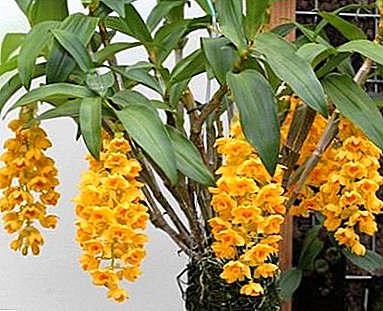 Phalaenopsis, dendrobium and some other groups like heat because they grow in natural conditions in areas with a tropical climate. In the summer, they set the temperature from 15 to 32 degrees, and in the winter - from 15 to 18 degrees.
Phalaenopsis, dendrobium and some other groups like heat because they grow in natural conditions in areas with a tropical climate. In the summer, they set the temperature from 15 to 32 degrees, and in the winter - from 15 to 18 degrees.- The second type of orchid includes plants found in nature in the middle mountain belts of the tropics, for example, miltonia and odontoglossums. For them, in the summertime, during the daytime, the temperature is kept at 18 to 22 degrees, and in winter, at night, a range of 12 to 15 degrees is required.
- The third group of orchids grows in the subtropics, therefore at home it prefers a cool content (Australian dendrobiums, lelias). In summer, temperatures should not rise above 22 degrees.
Top dressing
Orchids do not need frequent feeding, because they reduce the natural immunity of the plant and provoke the development of unpleasant diseases. During the flowering period, root fertilizers are completely discarded, replacing them with foliar. You can use special liquid fertilizer for orchids, but the solution is advised to prepare three times less concentrated than indicated in the instructions for the preparation.
We recommend to watch the video about the correct feeding of a blooming orchid:
Pruning
During flowering, orchids, of course, do not prune. From peduncle get rid of when the process is completed. There is no need to hurry with pruning, because the orchid may bloom again, releasing new flowers from the buds of the old arrow. As soon as all the flowers wither, let the plant stand for time to make sure there are no new buds.
Board: It is recommended to resort to pruning when the flower is completely dry, because, being in a green state, it supplies the rest of the plant with nutrients. With a sharp knife the arrow is cut at the very base, leaving a short stalk three centimeters long.
Transfer
It is not recommended to repot the plant during the flowering period.. An exception is the situation when you purchased an already blooming orchid and found that it is located in a substrate consisting only of sphagnum moss.
Carefully transfer into a pot, which is two centimeters larger in diameter, using a substrate that is suitable for orchids, purchased from a store or prepared independently. If the production primer includes bark, you don’t need to disturb the orchid and you should wait until the end of flowering with a transplant.
We recommend to watch the video about the correct transplanting of a blossoming orchid:
How to extend flowering what to do if it does not bloom?
 Extends orchid bloom competent care. You can not reset it, overfeed and fill.
Extends orchid bloom competent care. You can not reset it, overfeed and fill.
Adherence to proper care will allow the plant to bloom as long as possible. It is not so difficult to shorten the flowering period: it is enough to violate the conditions necessary for an orchid, for example, to clean it in a dark place.
The plant may not bloom because it feels too good and throws all its strength on the development of green mass. They resort to shock therapy: they transfer the culture pot to a cool room and stop watering. Extreme conditions will trigger the plant to begin flowering.
Conclusion
Proper care during flowering will extend the beautiful process for several months, so that the orchid will long be pleased with flowers.


 When she is just beginning to gain strength for the development of the peduncle, special supplements are important to help the flower grow faster.
When she is just beginning to gain strength for the development of the peduncle, special supplements are important to help the flower grow faster. Phalaenopsis, dendrobium and some other groups like heat because they grow in natural conditions in areas with a tropical climate. In the summer, they set the temperature from 15 to 32 degrees, and in the winter - from 15 to 18 degrees.
Phalaenopsis, dendrobium and some other groups like heat because they grow in natural conditions in areas with a tropical climate. In the summer, they set the temperature from 15 to 32 degrees, and in the winter - from 15 to 18 degrees.


